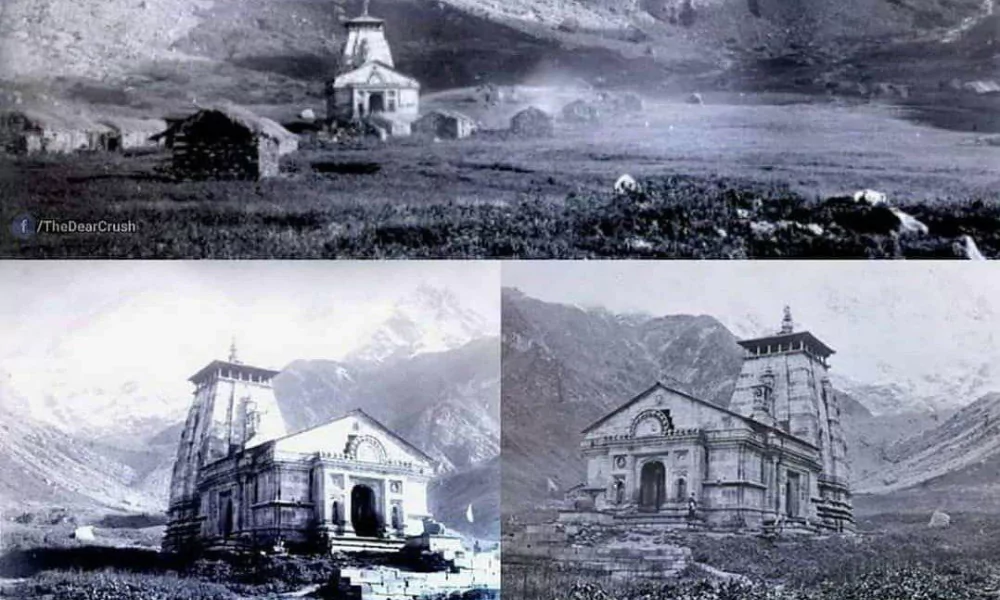Kedarnath Temple is one of the holiest Hindu temples in India. It is dedicated to Lord Shiva. The temple is in the Himalayas, in the state of Uttarakhand. Pilgrims visit this temple to seek blessings and experience its spiritual power. The history and legends of Kedarnath Temple make it a place of deep faith and devotion.
The Origins of Kedarnath Temple

Kedarnath Temple has a history that dates back thousands of years. People believe that the Pandavas from the Mahabharata built the temple. They wanted to seek forgiveness from Lord Shiva for their sins during the Kurukshetra war. They traveled to the Himalayas to find him, but Shiva avoided them. He took the form of a bull and disappeared into the ground. His hump remained in Kedarnath. The Pandavas built a temple at that spot. This is why Kedarnath Temple is considered so sacred.
The Mythology Behind Kedarnath Temple
The Story of the Pandavas and Lord Shiva
The Pandavas won the war against the Kauravas. But they had committed many sins, including killing their relatives. They wanted to cleanse themselves of these sins. They searched for Lord Shiva to seek his forgiveness. However, Lord Shiva was unhappy with the war and decided to test them. He disguised himself as a bull and hid in the Himalayas.
The Pandavas did not give up. They continued their search and finally reached Kedarnath. There, they saw a bull trying to disappear into the ground. Bhima, the strongest Pandava, caught hold of the bull’s hump. Shiva was pleased with their devotion. He forgave them and granted them blessings. The place where the hump remained became Kedarnath. Other parts of the bull appeared in different places in India. These five places are known as the Panch Kedar.
The Legend of Nar and Narayan
Another legend says that two sages, Nar and Narayan, meditated in Kedarnath for thousands of years. They prayed to Lord Shiva with great devotion. Pleased with their prayers, Lord Shiva appeared before them. The sages requested him to stay at Kedarnath to bless devotees. Lord Shiva agreed. Since then, the place has been sacred for Hindus.
The Mystery of the Kedarnath Temple’s Construction
Kedarnath Temple is very ancient. Some believe that the Pandavas originally built it. Later, Adi Shankaracharya rebuilt it in the 8th century. He wanted to revive Hinduism and strengthen the spiritual traditions of India. The temple stands strong despite being in a harsh climate. It has survived many natural disasters, including floods and earthquakes.
The architecture of Kedarnath Temple is unique. Huge stone slabs make up its walls. No cement or mortar holds these stones together. Despite this, the temple has remained standing for centuries. The extreme cold weather and snowfall do not damage it. People believe that divine energy protects the temple.
Kedarnath Shrine Was Under Snow For 400 Years
Scientists and geologists have discovered that Kedarnath Temple was buried under snow for almost 400 years. Between the 14th and 19th centuries, a mini ice age covered the temple in thick snow. When the snow melted, the temple emerged undamaged. This has amazed researchers and devotees alike. Many believe that divine power protected the shrine during this period. The survival of Kedarnath Temple under such extreme conditions is a great mystery.
The Miracle of the 2013 Flood
In 2013, a massive flood hit Kedarnath. The flood destroyed everything in its path. However, the temple remained safe. A huge rock rolled down from the mountains and stopped behind the temple. This rock blocked the floodwaters and saved the temple from destruction. Devotees believe that this was Lord Shiva’s divine protection. The temple was untouched, while everything around it was washed away.
The Significance of Kedarnath Temple
Kedarnath is one of the twelve Jyotirlingas. A Jyotirlinga is a special form of Lord Shiva that radiates divine light. These twelve Jyotirlingas are spread across India. Devotees believe that visiting them brings spiritual awakening and salvation.
Kedarnath is also one of the Char Dham pilgrimage sites. The Char Dham includes Kedarnath, Badrinath, Gangotri, and Yamunotri. People believe that completing this pilgrimage brings moksha, or liberation from the cycle of birth and death.
The Difficult Journey to Kedarnath
Visiting Kedarnath is not easy. The temple is at a height of 3,583 meters (11,755 feet) above sea level. The path is steep and difficult. Pilgrims must trek about 16 kilometers from Gaurikund to reach the temple. Horses, ponies, and helicopters are available for those who cannot walk.
Despite the tough journey, thousands of devotees visit Kedarnath every year. They believe that Lord Shiva’s blessings make the journey possible. The beautiful scenery of the Himalayas makes the pilgrimage even more special.
Conclusion
Kedarnath Temple is not just a place of worship. It is a symbol of devotion, strength, and divine protection. Its history, mythology, and legends inspire millions of people. The temple has survived many challenges, proving its spiritual power. Pilgrims from all over India and the world visit Kedarnath to seek blessings. The journey is tough, but faith makes it possible. Kedarnath remains a timeless beacon of hope and devotion for all.

